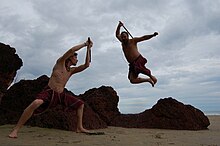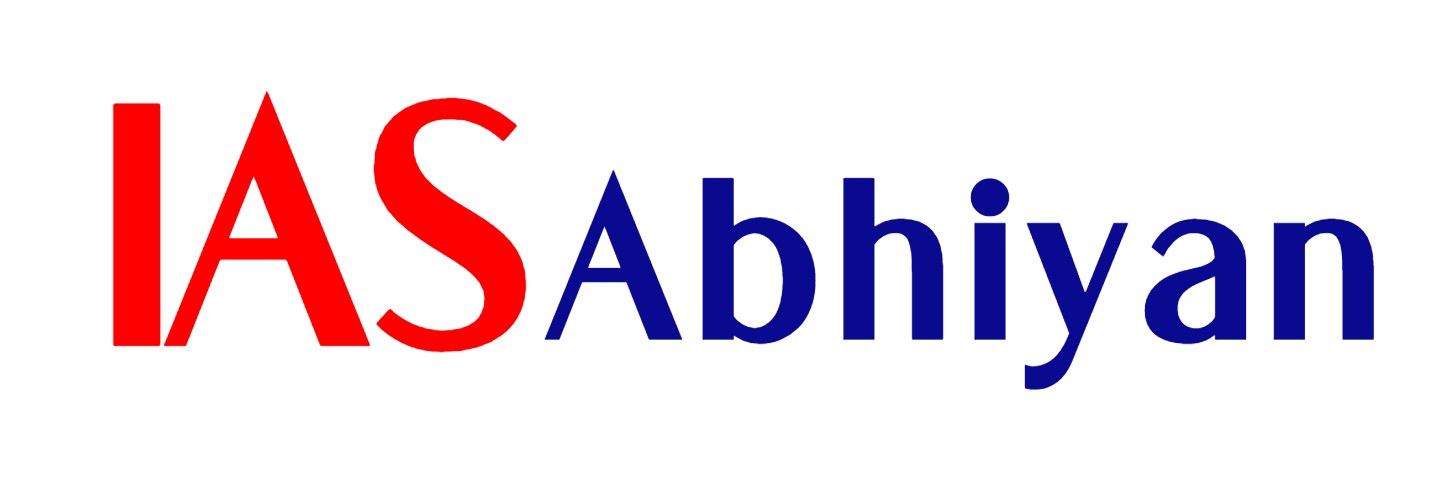Introduction
- Martial Art Forms in India refers to the fighting systems of the Indian subcontinent. A variety of terms are used for the English phrases “Indian martial arts”, usually deriving from Dravidian sources. While they may seem to imply specific disciplines (e.g. archery, armed combat), by Classical times they were used generically for all fighting systems.
- Among the most common terms today, śastra-vidyā, is a compound of the words śastra (weapon) and vidyā (knowledge).
- Dhanurveda derives from the words for bow (dhanushya) and knowledge (veda), the “science of archery” in Puranic literature, later applied to martial arts in general.
- The Vishnu Purana text describes dhanuveda as one of the traditional eighteen branches of “applied knowledge” or upaveda, along with shastrashastra or military science.
- A later term, yuddha kalā, comes from the words yuddha meaning fight or combat and kalā meaning art or skill. The related term śastra kalā (lit. weapon art) usually refers specifically to armed disciplines. Another term, yuddha-vidyā or “combat knowledge”, refers to the skills used on the battlefield, encompassing not only actual fighting but also battle formations and strategy. Martial arts are usually learnt and practiced in the traditional akharas.


Antiquity (pre-Gupta)
- An Indus valley civilization seal shows two men spearing one another in a duel which seem to be centered on a woman.
- Dhanurveda, a section found in the Vedas (1500 BCE – 1100 BCE) contains references to martial arts.
- The Mahabharata tells of fighters armed
- The oldest recorded organized unarmed fighting art in the Indian subcontinent is malla-yuddha or combat-wrestling, codified into four forms in the Vedic Period.
- In Sanskrit literature the term dwandwayuddha referred to a duel, such that it was a battle between only two warriors and not armies.
- The Charanavyuha authored by Shaunaka mentions four upaveda (applied Vedas). Included among them are archery (dhanurveda) and military sciences (shastrashastra)
- Kings usually belonged to the kshatria (warrior) class and thus served as heads of the army. Examples include such rulers as Siddhartha Gautama and Rudradaman.
- In the 3rd century, elements from the Yoga Sutras of Patanjali, as well as finger movements in the nata dances, were incorporated into the fighting arts.
- A number of Indian fighting styles remain closely connected to yoga, dance and performing arts. Some of the choreographed sparring in kalaripayat can be applied to dance[15] and kathakali dancers who knew kalaripayat were believed to be markedly better than other performers. Until recent decades, the chhau dance was performed only by martial artists.
- Written evidence of martial arts in Southern India dates back to the Sangam literature of about the 2nd century BC to the 2nd century AD. The Akananuru and Purananuru describe the use of spears, swords, shields, bows and silambam in the Sangam era.
- The ten fighting styles of northern sastra-vidya were said to have been created in different areas based on animals and gods, and designed for the particular geography of their origin
- The Khandhaka in particular forbids wrestling, boxing, archery, and swordsmanship.
Classical period (3rd to 10th centuries)
- Vajra-musti, an armed grappling style, is mentioned in sources of the early centuries AD
- Around 630, King Narasimhavarman of the Pallava dynasty commissioned dozens of granite sculptures showing unarmed fighters disarming armed opponents. This is similar to the style described in the Agni Purana
- The 8th-century text Kuvalaymala by Udyotanasuri recorded fighting techniques being taught at educational institutions
- The Gurjara people still keep up their tradition of gatka and kushti, and until today there are world-class wrestlers from the community competing at national and international levels.
Middle Ages (11th to 15th centuries)
- Kalaripayat had developed into its present form by the 11th century, during an extended period of warfare between the Chera and Chola dynasties
- In response to the spread of Muslim rule,[27] the kingdoms of South India united in the 14th century to found the Vijayanagara Empire. Physical culture was given much attention by both royalty and commoners in the empire, with wrestling being particularly popular with both men and women
- Royal palaces and market places had special arenas where royalty and common people alike amused themselves by watching matches such as cockfights, ram fights, and wrestling. One account describes an akhara in Chandragiri where noblemen practiced jumping exercises, boxing, fencing and wrestling almost every day before dinner to maintain their health, and observed that “men as old as seventy years look only thirty”
Mughal era (1526–1857)
- The Mughals were patrons of India’s native arts, not only recruiting akhara-trained Rajput fighters for their armies but even practicing these systems themselves.[33] The Ausanasa Dhanurveda Sankalanam dates to the late 16th century, compiled under the patronage of Akbar.[34] The Ain-i-Akbari tells that the Mughal court had various kinds of fighting men from around the empire who would demonstrate their skills every day in exchange for rewards.
- Avid hunters, a popular sport among the Mughals was shikar or tiger-hunting.
- There is also a 17th-century Dhanurveda-samhita attributed to Vasistha.
- The pehlwani style of wrestling developed in the Mughal Empire by combining native malla-yuddha with influences from Persian varzesh-e bastani.
Maratha dynasty (1674–1859)
- the Marathas became expert horsemen who favoured light armour and highly mobile cavalry units during war.
- After serving the Dakshin sultanates of the early 17th century, the scattered Marathas united to found their own kingdom under the warrior Shivaji. Having learned the native art of mardani khela from a young age, Shivaji was a master swordsman and proficient in the use of various weapons
- He took advantage of his people’s expertise in guerilla tactics (Shiva sutra) to re-establish Hindavi Swarajya (native [Hindu being a term traditionally applied to the native inhabitants of India throughout antiquity] self-rule) at a time of Muslim supremacy and increasing intolerance
- The still-existing Maratha Light Infantry is one of the “oldest and most renowned” regiments of the Indian Army, tracing its origins to 1768
Paika Rebellion
- Paika is the Odia word for fighter or warrior. Their training schools, known as paika akhada, can be traced back to ancient Kalinga and their art was at one time patronised by King Kharavela
Modern period (1857—present)
- Indian martial arts underwent a period of decline after the full establishment of British colonial rule in the 19th century
- The British colonial government banned kalaripayat in 1804 in response to a series of revolts.[47] Silambam was also banned and became more common in the Malay Peninsula than its native Tamil Nadu.
- During the following three decades, other regional styles were subsequently revived such as silambam in Tamil Nadu, thang-ta in Manipur[49] and paika akhada in Orissa
| Martial Art Forms in India | Key Features |
| PARI-KHANDA |
|
| INBUAN WRESTLING |
|
| KUTTU VARISAI |
|
| MUSTI YUDDHA |
Third refers to Bhimaseni, which focusses on sheer strength and fourth is called Jarasandhi that concentrates on limb and joint breaking. |
| LATHI |
|
| THODA |
The two teams are called Pashis and Saathis, who believed to be the descendants of Pandavas and Kauravas of Mahabharata. |
| GATKA |
It is displayed in various occasions, celebrations in the state including fairs. |
| THANG-TA AND SARIT SARAK |
|
| SILAMBAM |
|
| KALARIPAYATTU |
Women also practiced this art, Unniyarcha; a legendary heroine won many battles using this martial art. |
| MALLAKHAMB |
Though Madhya Pradesh declared Mallakhamb the State sport only in 2013, it had been developed as a competitive sport since 1981, with rules and regulations introduced at the first National Championship that year. |
| KATTI SAMU (SWORD FIGHT) & KARA SAMU (STAFF FIGHT) | In this type of Martial arts person use Staff (Mainly Made of Bamboo) or Sword to defend or attack the enemy. Originated from Andra Pradesh and Some Parts of Telangana. |
| ADIMURAI |
It is believed that Adimurai originated from Southern Parts of Tamil Nadu Tirunelveli, Kanyakumari. |
| MARDHANI KHELSQAY |
The early history of mardani khel as a distinct system is difficult to trace prior to the 1600s, but it is said to owe its development to the particular geographic conditions of Maharashtra. |
| SQAY |
|
| CHEIBI GAD-GA |
|
Visit Abhiyan PEDIA (One of the Most Followed / Recommended) for UPSC Revisions: Click Here
IAS Abhiyan is now on Telegram: Click on the Below link to Join our Channels to stay Updated
IAS Abhiyan Official: Click Here to Join
For UPSC Mains Value Edition (Facts, Quotes, Best Practices, Case Studies): Click Here to Join

